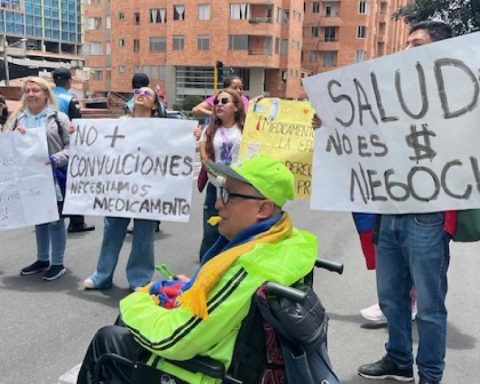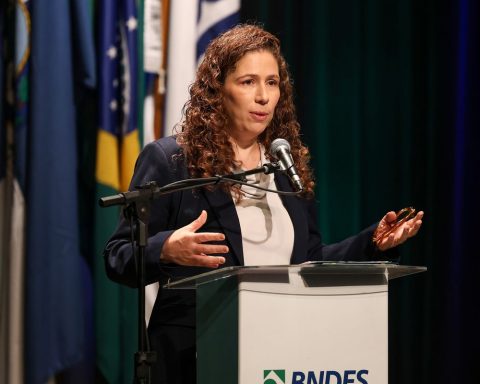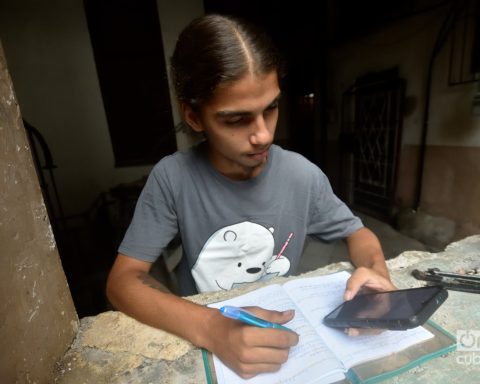The finances of the health system have been generating uncertainty in many of the actors, although the organization and The development of the entity in charge of payments for the sector’s resources is working to stabilise the situation in the sector.
Companies affected by the computer blackout that has the world in suspense
Félix León Martínez, director of the Administrator of Resources of the General Social Security System in Health (Adres), He spoke with Portafolio about the entity’s plans, the management of resources and the strategies that are in place with the direct transfer. He also explained the health reform that they are going to present and the few modifications to it.
How are the accounts?
These are the figures. We spent around $71 billion in 2022, $82 billion in 2023, and in 2024 we will reach a budget of $92 billion. It must be taken into account that contributions are progressively made to health; for example, the Government’s resources were calculated at 9%. But then the Regulatory Commission meets to determine the UPC and approves 12%. The incorporation, the additions, come to complete that budget.
Last year we had additions up to December 28. They gave us $1.5 billion that the Ministry of Labor had not executed. The UPC is what is secured first. There are many other small expenses that sometimes are not financed at the beginning and we have to get the resources little by little.
The maximum budget is not funded at the beginning of the year. This year it started with $400 billion, and we are already at $2.5 trillion. At the moment we are at $92 trillion, but we already have an addition and we have reached about $94 trillion. That is a growth that from 2022 to 2023 was 15% and we are already at 11.5%.
Petro ministers to be investigated for anomalies in new teacher health system
Finance
iStock
Do they fit well or are they tight?
We are doing well and, as the Minister of Finance said, health resources are guaranteed, they are not affected by the cuts. The State has always responded, for example, contributions from the General Participation System and the National Budget have to complete the closure of Social Security payments. That is the mechanism. But it always grows, above the investment and they are safe resources.
In terms of investment, the first is the National Budget, and the second is the contributions of the workers. I would like to remind you that this item was very important before in Law 100, but not anymore, because the employers stopped paying contributions. With the Tax Reform of 2012 and 2017, contributions from them are no longer needed.
Asinfar says Colombia needs a pharmaceutical industrialization policy
Would that have to change with the reform?
There is no consideration. There is no tax modification in the project, neither in terms of income nor in terms of contributions. I had projected at the beginning of this Government, in the tax reform, that companies would contribute more than three minimum wages. Today it is at 10 SMLMV.
But the government does not want to increase or recover part of these contributions. It showed no interest and inferred that things would remain the same. And the reform does not address tax issues because that would make it much more difficult and complex.
Complaints and claims about Fomag have been reduced by almost half

Health system in Colombia
iStock
Why is the General Participation System growing more?
The tax reform that was made increased the income of the General Participation System and that is money from the municipalities, according to the Constitution. That money is what the reform says should be directed more to the municipalities, to primary care. It is the money that we should not centralize in the big cities.
And in terms of expenditure, there are two major ones, the UPC of the contributory regime and the subsidized one, which are $40 billion each, and there are also the maximum budgets, which are for the payment of services that are not contemplated in the UPC.
Furthermore, the Government’s contribution to the annual financing of the system was 25% from 2022 to 2023 and so far we are at 20% from 2023 to 2024. I don’t think it is precisely defunding the system.
Is this being reflected in the UPC? Because what has been said is that it is underfunded.
Here, $7 billion are circulated monthly and the system’s money moves regularly and there is no shortage. Another thing is that some EPSs say that they do not have enough. Adjustments have been made. There is a debate and the fact is that up to now the Ministry has not found justification. The figures provided by the EPSs do not show that it is insufficient. We are doing another review with the Treasury and again we find that there does not seem to be justification.
Heel wants to enter the top 20 of the best-selling brands

Health
iStock
What have you noticed with Sanitas’ intervention?
A number of problems have been found in the expenditure. For example, there are many and an accounting management with which accountants do not agree with what has to do with technical reserves, how they are charged or discharged at cost. There are others that are not considered entirely acceptable.
We also have another problem with the EPSs, which is the per capita spending last year. The three EPSs that wanted more resources, which they said were not enough, are the ones that receive the most per capita, almost $1.8 million per patient, while there are others that receive $1.2 million.
Another characteristic is how the maximum budgets are spent between contributory and subsidized systems when they have the same population. There is a huge difference between the two systems, with the contributory system having the highest value.
The Meditech fair aims to exceed 7 million dollars in business
Why do prepaid card users spend more?
The cost to the system of those members who have a plan is 3.4%, which means that while the regular member who does not have a plan spends 1%, the one who is prepared costs the system three times as much. It turns out that the EPSs that have a plan provide special services but charge them all to the system, which is the one that ends up paying for them, except for other consultations.
In the case of Sanitas, in 2022 they showed losses of $200 billion, but their prepaid health insurance companies and clinics showed profits of $500 billion. In other words, in a way they transferred the profits to the associated companies and the EPS was asking for money.
Risaralda, a leading department in health

Healthcare system
iStock
A complaint was made about non-payment of maximum budgets for 2022, what happened?
In 2023, we paid the 2021 adjustment that the previous government had left without financing. At the end of that year, we got the money for the 2023 adjustment. These old debts from Covid are charged to public debt, another source that we did not have.
It was approved by Congress in the Development Plan and this obligation was incorporated into the National Budget in December. Since there was no more room for implementation at that time, it had to be incorporated again in this year’s budget.
Rose water: experts talk about its myths and truths
The Ministry of Health can issue payment resolutions, but this money is not here because it is public debt, it is in the Treasury. We are waiting for the transfer from that portfolio to arrive.
Is the tariff manual maintained in this reform?
The reform aims for a single tariff manual in the system. The Ministry had been working with clinics and hospitals to adjust this manual. I do not have the details because in this version of the system we do not have competition in the tariff. In the next version, with the reform, we can have competition in tariffs.

Address
iStock
What reform are they going to present?
This is what was negotiated with the EPSs in many of the contents. But the negotiations had to do with the functionality, the responsibilities of each of the agents. It was an interesting job that was agreed with them. They wanted to be clear about the role of the managers and I think that a lot of progress was made in that regard.
The components are the same as those presented and passed in the House without many modifications. The principles are the same: the transformation of EPS into managers who administer the services but do not manage the money. The prevalence of primary care because the country is behind and neglects this aspect, and the expansion of care networks.
Today, the EPSs are autonomous. They will not have that power, they will only respond. The network of services will be broader and will not be defined exclusively by the management, but by the territorial government.
There will also be no difference between contributory and subsidized, there will only be one. The difference is whether there is an obligation to pay or not. But not in the service, there will be no difference in that.

Felix Leon, director of Adres.
Courtesy
Where are basic health equipment being financed from?
What the Government is doing is funding the UPC through a different means. But what has to go forward is that these teams become part of primary care, of global financing and they must belong to primary care centres. Now it is being developed separately, but with the reform it is proposed as a component of primary care.
Why do my rings sometimes feel tight? The reason for the swelling will surprise you
What is the balance of direct rotation?
Direct transfer is not intended to pay off debts. This money does not accumulate in the portfolio. On the contrary, it prevents the growth of debts. There are greater benefits, such as ending the uncertainty about the receipt of funds from hospitals and clinics.
An entity needs a fixed monthly income to be able to operate, and since there is no mandatory regime, a monthly payment regime is created, giving peace of mind to many IPS. However, if they receive little or order little, it is not the fault of the Adres, but of what they report to the EPS.
Is living for 20,000 years possible? Expert explains how it could be achieved
What are the plans with SOAT?
We are working on a strategy to identify “ghost” vehicles. $40 billion has been paid for this concept in injuries to traffic agents. And we have problems with many irregularities in this billing as well as in the management of ambulances in the country. In addition, we identified 53 institutions that apparently do not exist. We are organizing these issues of Soat.
DIANA K. RODRIGUEZ T.
Portfolio Journalist
















